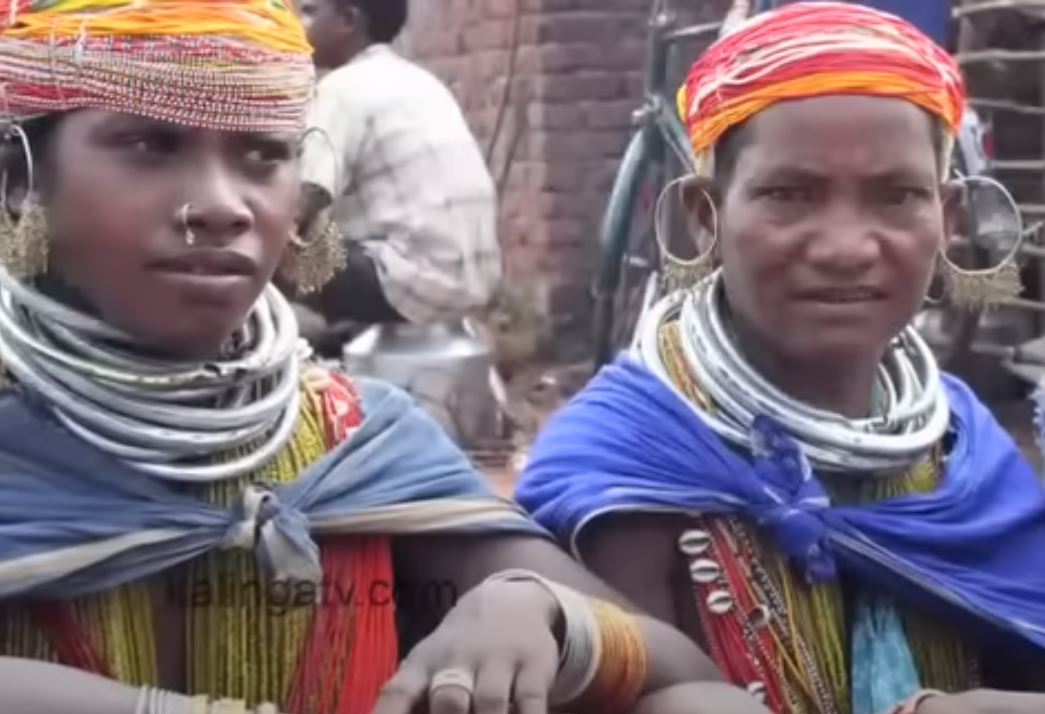Bonda tribe of Odisha’s Malkangiri: A report, watch
The unique traditions, culture and practices of the Bonda tribe make them special
The tribal-dominated Malkangiri district is located on the Odisha-Andhra Pradesh border. These days a mixed culture of modern and tribal practices is seen here. These days the Government is making many efforts towards the development of this district. The district is home to the primitive Bonda tribal people. Their unique traditions, culture and practices make them special. Kalinga TV Digital presents here a special ground zero report about the lifestyle, ornaments, clothes, practices and origin of these tribal people.
The Bonda ghati is situated at a distance of 80 km from the district headquarters of Malkangiri. The Bondas are seen in the Khairput block on the hill in a forest environment. They are simple but independent-minded and have their own rules, customs, festivals, food habits and practices. They are nature lovers. They worship mother earth. They are women-centric families where the women play the main role.
The primitive Bonda people have started to adapt to development. It is said the primitive Bonda people had travelled here about 60,000 years ago from Africa. The Bondas of Malkangiri are from the first wave. They are also regarded as the first forest dwellers in the country. According to researchers they are Austroasiatic tribe members who had been shifted to the 130 km areas of the hill.

The ancient civilization of these people is on the verge of extinction. The upper Bondas live about 5 thousand feet above sea level in the Bonda Ghati. They live in 32 villages with a population of 7089 people.
The lifestyle of Bondas is different from others. The women are bald-headed and semi-nude. They wear small clothes made by themselves. It is called ‘Ringa’ or Nudik in the Bonda language. However, the body is covered by a number of ‘Lumbeidaka’ (necklaces). They wear Jhunugalu in the ear. The khagala worn as necklace doubles their beauty. These ornaments give Bonda women a special identity which attracts even foreigners to pay a visit here. However, with advent of modern trends, these traditional practices have been replaced with modern practices. Women have started to wear Salwar in place of Ringa and dresses. Of course, young women have been seen in such dresses while the old and aged women are still seen wearing traditional wearing.
Also read: Water From Bonda Ghati Of Odisha’s Malkangiri Dist To Be Used In Worship Of Lord Sri Ram In…
Not only the attire but the traditions, culture and festivals of Bondas are unique. Bonda women use to marry boys who are about 8 to 10 years younger than them. Hence, Bonda families are women-centric. The women earn their livelihood and run the family. Of course, these days many rules have changed. The popular practice of Dhangidibasa is hardly seen these days. The Pata khanda festival, Jhati festival, Simba festival etc. of the Bonda tribe are hardly seen now. The Bonda women were seen performing their traditional dance and music in these festivals.
The origin of Bondas is too old. They are related to the Ramayana age. We can see the Seeta Kunda, Bali Pahada and so many other monuments of Ramayana here even today.

It is believed that during their hermitage, Goddess Seeta had taken bath in the Seeta Kunda here. Lord Ram, Laxman and Goddess Seeta had lived in the Bonda hills here for a small span of time.
It is believed that during their stint here once mother Seeta was taking bath in the spring located in the Mudulipada ghati when some Bonda women laughed. Being angry with this the Goddess cursed them to remain naked and bald. Later, the Bonda women realised their mistake and apologized to Mata Seeta. They prayed for her to withdraw the curse. She was then pleased but could not withdraw the curse. Hence, Mata Seeta tore a piece of her clothing and gave it to the Bonda women but that piece could cover only the lower part of their bodies. Hence, since then, they are seen as half-naked. Even today we can see the footsteps of Mata Seeta here. A temple has been built named after Goddess Seeta.

Similarly, another souvenir of Ramayana here is the Bali pahada. It is believed that the monkey King Bali of the Ramayana age and his brother Sugriba had got engaged in a fierce fight here. Even today there is sometimes fire that breaks out automatically. And when someone walks on the hill the sound of the drum is heard. Hence, a temple has been constructed here. It is now too difficult to walk on this hill. The locals have demanded that if the government would come up with the proper arrangements, this can be a tourist attraction.
Though a little bit of modernity has been adopted, still the Bonda tribe has not forgotten its traditional practices. They are still speaking ‘Remo’ the language of the Austroasiatic Mundari community.
On the day of their birth, only the Bonda kids get a name. They are divided into three groups. The upper Bondas, lower Bondas and the Gadaba Bondas. The Bondas who were living in the forest were dependent on the forest to hunt animals. It is said since they don’t want to live in the plain areas; they don’t have many options professions for them. However, deforestation has largely affected their lives. They do Podu cultivation. This is also a reason for deforestation while it also brings other problems. Hence, they are now encouraged to take up other professions.




 Ms Kalinga
Ms Kalinga